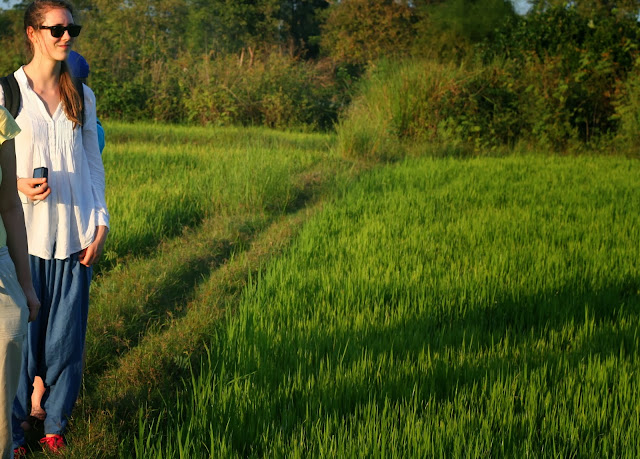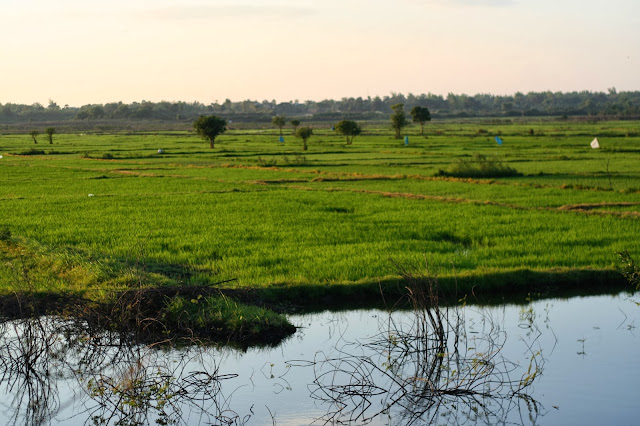We're very fortunate as a family to be travelling in Cambodia at the moment, so I'm taking a break from the usual sewing content to bring you some of our travels. Peter was working in Phnom Penh so the kids and I did a bit of exploring on our own, including the gruelling but necessary trip to the Killing Fields near Phnom Penh which you can read all about from my previous visit here.
Phnom Penh is a fascinating place to wander around and just soak up the sights and starting after a calm breakfast by the pool, prepared us well for the day!
There's always something interesting to see at the market too:
The Royal Palace is a must
Then while Peter finished off his work we went away for a couple of nights to a rural home stay to get more of an idea of how people live in the country.
We slept in a simple hut next to the family home
After breakfast our hostess took us for a bike ride about 20 kms around her local village area and we stopped to talk to people along the way. With the benefit of her translation we were able to ask lots of questions and chat. The villagers were also curious about us, so it felt a bit reciprocal which was great.
The rice had recently been harvested and was spread out to dry in the sun everywhere in front of people's houses.
We were shown how to cut the rice. Each farmer is a subsistence farmer, usually just growing enough for their own family and a bit to sell/trade for other necessities. Most of the work is back breakingly hard and done by hand.
Another family makes their living weaving
As well as helping his wife prepare the cotton for weaving, this man is also a teacher in the village school
There were loads of engaging little kids everywhere. They are often looked after by farming grandparents; many of the parents seemed to be in Thailand where they were able to earn a little more money in construction or in garment factories.
We also saw a rubber plantation. Channels are cut in the bark and the latex runs into little funnels and into buckets. These farmers are up early as the sap runs the fastest around 3 in the morning. When we arrived they were resting in hammocks strung between the trees waiting for the day's rubber to be collected.
During our stay we also went on a four hour walk in another direction; partly this was across the land of our host's parents'.
The previous evening we had met Kheang's mother who survived the Pol Pot era.
Their experience in this rural area was a different one to those of the displaced city dwellers and it was eye opening to hear all about it. Amazingly she is not embittered, despite having suffered much. It was good to hear that for her, talking to visitors has been useful in helping her to process all that has occurred.
She is now 67 and very attached to the land she farms. Her living is meagre and she works very hard; growing rice, fruit trees, lotus and squash
We learnt a bit about the sugar palm, which is a staple crop in Cambodia. The male and female trees are separate and their flowers and fruit have different uses. It takes 15 years to determine whether a tree is male or female.
Some discs of palm sugar produced by boiling the sap and pouring it into bamboo rings to set.
This family were collecting their dried rice and storing it away for use over the year. This quantity is enough for a small family's needs.
 |
| Lotus fields |
Rice of the second planting is intensely green.
Some families camp in their fields during the harvest.
Food of many kinds can be gleaned from the Mekong flood plains.
 |
| The boy's tractor is made out of palm fruit |
Up next a post from an Eco lodge in the Cardamom Mountains in the South west of the country.






















































